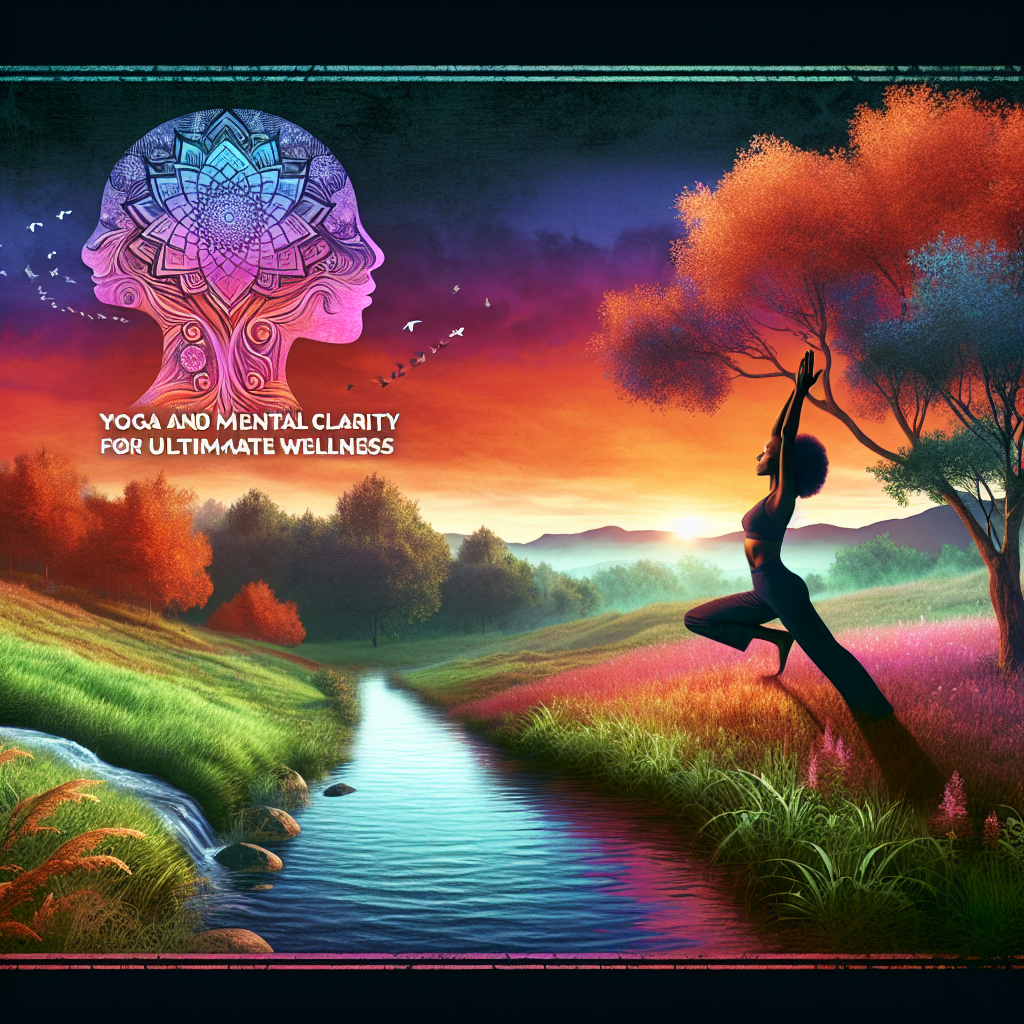In today’s fast-paced world, achieving mental clarity has become increasingly important. Yoga, a holistic practice that combines physical postures, breathing exercises, and meditation, offers a pathway to not only boost mental clarity but also unite the body and mind. In this article, we’ll explore how yoga can enhance your mental well-being, the science behind its benefits, and practical tips for incorporating yoga into your daily routine.
Understanding Yoga and Its Philosophy
Yoga is derived from the Sanskrit word “Yuj,” which means “to yoke” or “to unite.” This union is not just of the body and mind, but also the individual self with the universe. Ancient texts, such as the Yoga Sutras by Patanjali, emphasize that yoga is a way to achieve mental discipline and self-awareness.
The Connection Between Yoga and Mental Clarity
Yoga enhances mental clarity through various channels:
- Mindfulness: The practice encourages being present in the moment, clearing the clutter of distractions.
- Breath Control: Pranayama, or breathing techniques, calms the nervous system, reducing stress and anxiety.
- Physical Movement: Asanas (yoga poses) promote blood flow, which helps in enhancing brain function.
Benefits of Yoga for Mental Clarity
Regular yoga practice offers an array of benefits, particularly for mental clarity:
1. Reducing Stress
Yoga helps in lowering cortisol levels (the stress hormone), leading to a calmer state of mind. Simple practices like Savasana (Corpse Pose) can be incredibly effective in managing stress.
2. Enhancing Focus and Concentration
Yoga teaches focus through mindful movement and meditation, which can help improve concentration in daily tasks, reducing mental fog.
3. Increasing Self-Awareness
By connecting with your body and mind, you develop a greater understanding of your thoughts and emotions, leading to enhanced self-awareness and emotional regulation.
4. Promoting Emotional Stability
Regular yoga practice has been shown to help combat anxiety and depression, promoting a more balanced emotional state and clarity of thought.
Yoga Practices for Achieving Mental Clarity
The following yoga practices are particularly effective for fostering mental clarity:
1. Meditation
Meditation can be practiced in conjunction with asanas or on its own. Simple techniques like focusing on your breath or visualizing a peaceful scene can clear your mind.
2. Breathing Exercises (Pranayama)
Techniques like Nadi Shodhana (Alternate Nostril Breathing) can calm the mind and reduce stress. This form of breath control can quickly help restore balance during chaotic moments.
3. Asanas
Incorporating poses like Padmasana (Lotus Pose), Bhujangasana (Cobra Pose), and Vrikshasana (Tree Pose) into your routine can enhance concentration and combat mental fatigue.
Making Yoga a Part of Your Daily Routine
Integrating yoga into your daily life can be simple and rewarding:
- Start Small: Begin with just ten minutes a day. Gradually increase the duration as you build your practice.
- Create a Dedicated Space: Designate a quiet space for your practice. This will serve as a calming environment to help you focus.
- Use Online Resources: Platforms like YouTube and various yoga apps offer guided sessions that cater to different skill levels.
Conclusion
Yoga acts as a powerful tool for enhancing mental clarity and achieving holistic wellness. By uniting the body and mind, yoga helps to cultivate mindfulness, reduce stress, and improve focus. Whether you are a seasoned practitioner or new to yoga, embracing this ancient practice can lead to profound benefits. Start today, and enjoy the journey towards improved clarity and overall well-being.
FAQs
1. How often should I practice yoga for mental clarity?
Even practicing yoga for 10-15 minutes every day can yield benefits. Consistency is key to experiencing significant improvements.
2. Can yoga help with anxiety?
Yes, various studies have shown that regular yoga practice can significantly reduce anxiety levels and promote emotional stability.
3. Do I need to be flexible to start practicing yoga?
No, yoga is accessible to everyone, regardless of flexibility. The practice is meant to enhance your natural abilities over time.
4. What are the best poses for beginners?
Beginner-friendly poses include Mountain Pose (Tadasana), Child’s Pose (Balasana), and Cat-Cow Pose (Marjaryasana-Bitilasana).
5. Should I practice yoga in the morning or evening?
Both have their benefits. Morning yoga can energize you for the day, while evening yoga can help you unwind and relax after a busy day.





